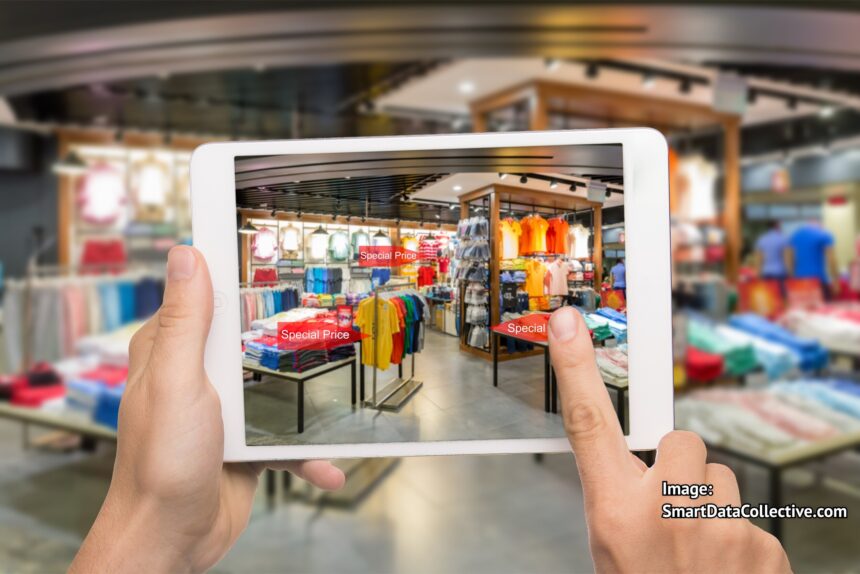It’s no secret that over the last 20 years, the Internet has revolutionized retail as we know it. In fact, e-commerce continues to make inroads into traditional retail markets, with brick-and-mortar stores closing at an unprecedented pace. This can partly be attributed to the continued rise of Amazon, but other elements are at play. Between social media, much improved mobile checkout experiences, and the advent of new technologies, such as augmented and virtual reality, retail continues to adapt and evolve to our needs. All that is to say, the retail landscape of the future may look nothing like the one you grew up with.
Social Media
Take one look at the primary revenue source for social media platforms like Facebook and Instagram, and it’s easy to see the effect these platforms have on the retail industry – they are major advertising outlets for businesses. But social media platforms are surely more than just a glorified billboard, right? Yes. Increasingly, social media platforms are evolving, away from pure advertising outlets into something closer to an integrated advertising and sales tool. To use an old idiom, they’re making it possible for buyers to have their cake, and eat it too.
Social channels are releasing post and ad formats that allow businesses to take advantage of their users’ desire for instant gratification when shopping. For example, Facebook now offers “shoppable” ads, such as its recently released Collections format, where users are shown product catalogs directly underneath the creative ad copy. Thus, after reading an ad, users can transition directly to buying. And Instagram has photo posts with specific product overviews, or “tags.” When users are scrolling through their feed, they may see a product that interests them; with Instagram’s shoppable photo tags, they can go directly from browsing to buying, in one fell swoop.
Your social media experience may soon be very different than the one you’re accustomed to. Rather than scrolling through a feed of posts, links, and photos from friends and family, you may find that it’s more akin to watching television – except you’ll be able to act on the advertisements that you see in real time, rather than having to remember the ones that you like for a later day. Whether this is a good thing or bad thing will depend on the individual of course – some people truly love to shop! If that’s you, you’re in luck.
Augmented and Virtual Reality
One of the great hurdles of online shopping is that there’s no good way to experience the product before buying. When buying a car, you can test drive it. When shopping for clothes in person, you can try the garments on to see how they fit. With online shopping, there’s no equivalent. Augmented and virtual reality could change that.
The promise of this technology is that it can bring the product to you – not in a literal sense, but a figurative one. Nonetheless, anything that can help make the online shopping experience more tangible is probably a good thing. With virtual reality goggles, like the Oculus or HTC Vive, you could soon immerse yourself in a wholly digital shopping environment. In fact, companies like Retale are already working on that very premise, and Chinese e-commerce company Alibaba has already put the technology to use. Other retailers, like IKEA, will be incorporating augmented technology in their forthcoming mobile app – simply use your phone’s camera to try out different pieces of furniture in your home.
Mobile Checkout
Last year, total mobile use surpassed desktop usage for the first time. With 5G technology on the horizon, we can expect that mobile usage will only continue to increase in volume and frequency. Which means that more often than not, you will be making your online purchases from your phone or tablet – and not your computer. Thankfully, mobile checkout experiences get better by the day.
As Domino’s has proven, a well-designed mobile experience can greatly benefit not only the company bottom line, but the buyer as well. Prominent, well-placed “Buy” buttons and intuitive buying processes can help expedite and improve the shopping experience, and in turn, reduce many of the hesitations and complaints that people have about shopping from their mobile device (“The buttons are too small,” etc.). With companies like Domino’s showing that mobile checkouts can and do work, expect to see more and more mobile checkout processes improve in the very near future, as people continue to spend more right from their phones and tablets.
Technology: Changing the Way You Shop
Whether you realize it or not, we’ve all experienced technology’s effect on the buying experience. After all, there was a time not too long ago when cash was a mainstay of any transaction; now, in countries like Sweden, cash accounts for as little as 15 percent of all purchases, with digital transactions and credit cards accounting for the rest. There is no doubt that new technologies – including social media, mobile technology, 5G technology, and augmented and virtual reality – will continue to play a role in the way that you shop. Follow the trends and you’ll see for yourself!

